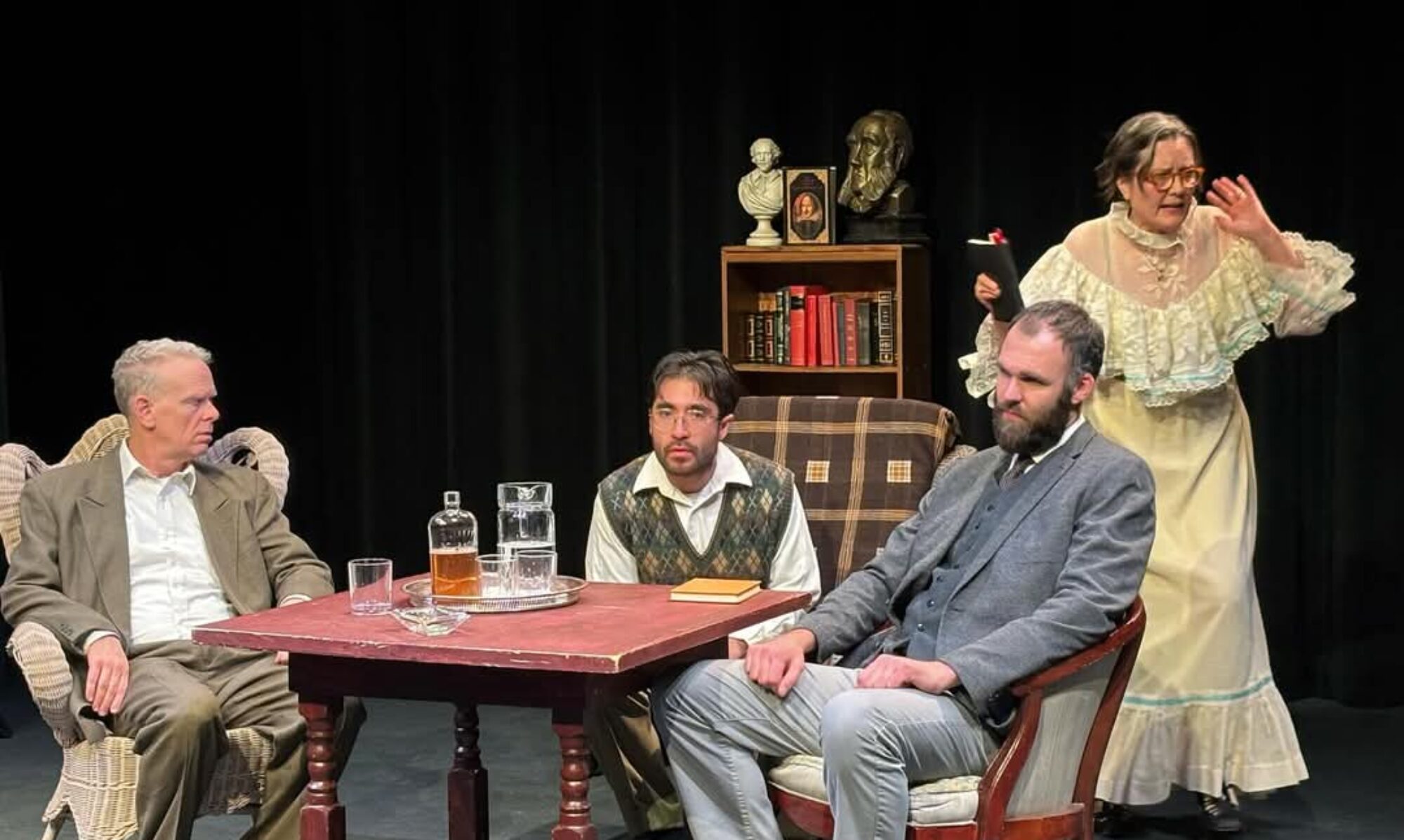Our sixth season—1985-86: It was the worst of times and it was the best of times. Our first show of the season, York 8, was our last show at the Rawhide Court theatre. The county closed us down for a number of code violations. We were not very knowledgeable about building codes and regulations in those days. So, we were back on the road again. Orpheus Descending at Southern Hills Jr. High; The Lady’s not for Burning in the City Council chambers. Neither space was satisfactory.

But there was a lot going on in the world of the arts in Boulder in the mid-eighties. The city government had been planning to build a performing arts center and had floated a bond issue and started a fund-raising campaign to pay for it. In response most of the city’s arts organizations joined in the effort to pass the bond issue and to raise money. There was an organization that had been formed long before called the “Arts and Humanities Assembly of Boulder” (AHAB) that had been defunct for some decades and was now revived. We all joined it and campaigned for the performing arts center.

Well, the bond issue failed, and AHAB was torn by some fierce internal struggles and finally transformed itself into The Boulder County Arts Alliance. The best laid plans of mice and men . . .

Among the mice were a number of theatre companies. We did not think of each other as competitors any more, if we ever had; we thought of each other as partners. Our members had served together on committees and sub-committees within AHAB. Some had shared space at the Rawhide Court theatre. And we began to learn how much we should value each others’ successes. When you see a play—anywhere—I want you to have had a good time; I want you to say, “I really like going to the theatre,” not “I don’t really like theatre.”

So some of us got together and formed an informal alliance that we called The Boulder Theatre Producers’ Guild. Our main goal was to find a permanent performance space we could share.

One day, I think it was in the middle of our sixth season but memory is uncertain, I got a call from—I think it was the director of BMoCA—asking me to come to a City Council meeting and speak in favor of building a theatre on the second floor of the BMoCA building. I and several others did and the Council approved the idea and the theatre got built. But—and this is why it was the best of times—toward the end of that meeting one of the Council members turned to me and asked if we, the Guild, had found a space. I said no, and he then said that since the bond issue had failed there was still money in the fund created for it, so how much would we need?

The most responsible answer would have been something like, “I’ll do some research and prepare a budget and get back to you.” Instead I heard myself blurting out, “Twenty thousand dollars,” and he said “I think we can do that.”
Wow.
So, for the next couple of decades the Guild was a $20,000 line item in the city’s budget. We were no longer an informal alliance. We incorporated as a not-for-profit 51 (c) 3. We learned about building codes and zoning and fire regulations. We leased a warehouse at 4840 Sterling Drive and built two theatres there. In 1997 the Guild moved to the Dairy. Was the money well spent?

Here is a list of the theatre companies the Guild hosted over the eleven years of the the Guild Theatre: The Upstart Crow, Boulder Conservatory Theater, Actors Ensemble, The Boulder Repertory Theatre Company, Nomad Players, Directors Theatre, The Shakespeare Oratorio Society, Trouble Clef Players, Goddess Theatre, September School, Imagination Makers, Now or Never, Dark Night Theatre, The Play-Ground Theatre, Boulder Ensemble Theatre, Holy Cow, Playwrights Unit, Rainbird Productions, Mingled Ages Theatre Company, Sirius Theater, Colorado Theatre Festival, Lady Jane Productions, Ancestral Moons, Rising Stage Theater Company, On-Stage Productions, X-Axis Independant Theatre, Mystik Hande, and Colorado Dramatists.I think it was money well spent.

